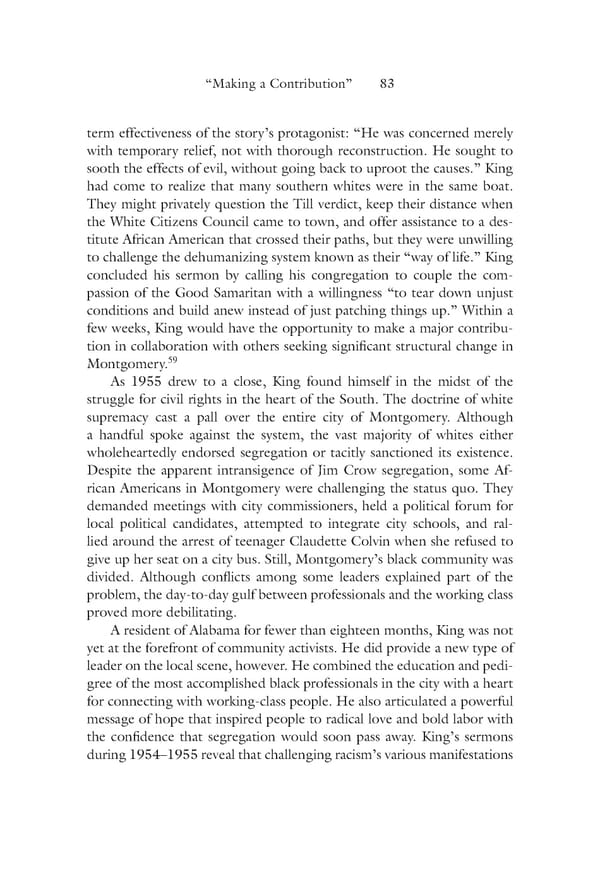“Making a Contribution” 83 term effectiveness of the story’s protagonist: “He was concerned merely with temporary relief, not with thorough reconstruction. He sought to sooth the effects of evil, without going back to uproot the causes.” King had come to realize that many southern whites were in the same boat. They might privately question the Till verdict, keep their distance when the White Citizens Council came to town, and offer assistance to a des- titute African American that crossed their paths, but they were unwilling to challenge the dehumanizing system known as their “way of life.” King concluded his sermon by calling his congregation to couple the com- passion of the Good Samaritan with a willingness “to tear down unjust conditions and build anew instead of just patching things up.” Within a few weeks, King would have the opportunity to make a major contribu- tion in collaboration with others seeking significant structural change in Montgomery.59 As 1955 drew to a close, King found himself in the midst of the struggle for civil rights in the heart of the South. The doctrine of white supremacy cast a pall over the entire city of Montgomery. Although a handful spoke against the system, the vast majority of whites either wholeheartedly endorsed segregation or tacitly sanctioned its existence. Despite the apparent intransigence of Jim Crow segregation, some Af- rican Americans in Montgomery were challenging the status quo. They demanded meetings with city commissioners, held a political forum for local political candidates, attempted to integrate city schools, and ral- lied around the arrest of teenager Claudette Colvin when she refused to give up her seat on a city bus. Still, Montgomery’s black community was divided. Although conflicts among some leaders explained part of the problem, the day-to-day gulf between professionals and the working class proved more debilitating. A resident of Alabama for fewer than eighteen months, King was not yet at the forefront of community activists. He did provide a new type of leader on the local scene, however. He combined the education and pedi- gree of the most accomplished black professionals in the city with a heart for connecting with working-class people. He also articulated a powerful message of hope that inspired people to radical love and bold labor with the confidence that segregation would soon pass away. King’s sermons during 1954–1955 reveal that challenging racism’s various manifestations
 Becoming King: Martin Luther King Jr. Page 103 Page 105
Becoming King: Martin Luther King Jr. Page 103 Page 105